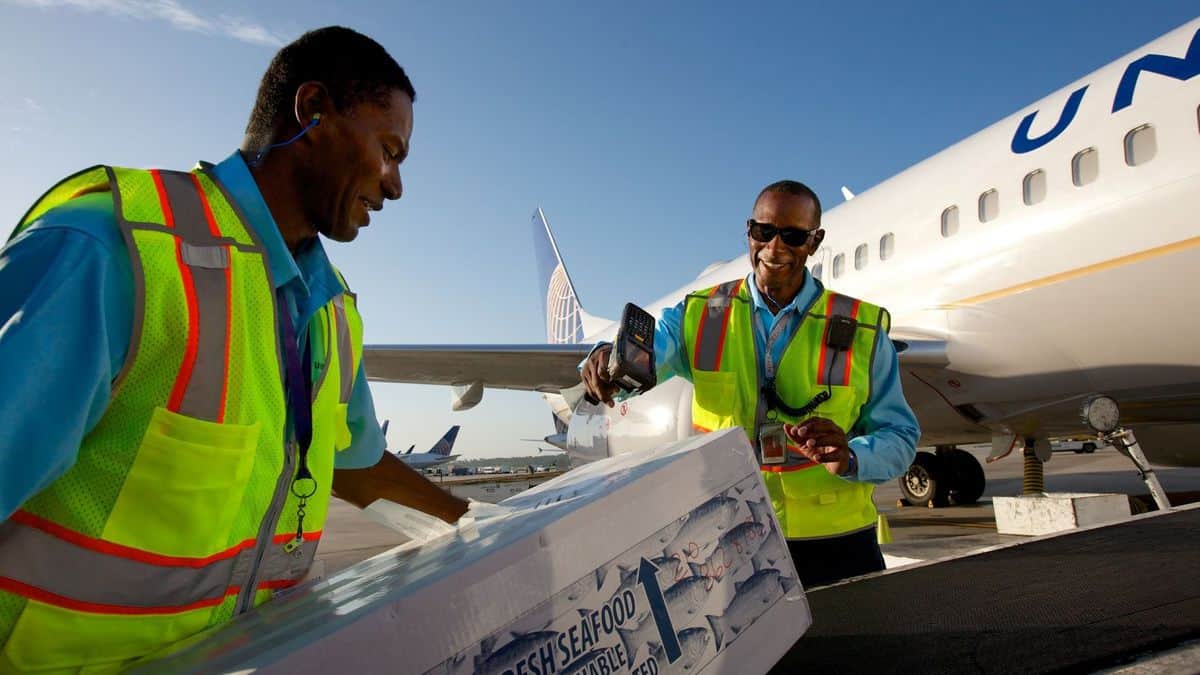United Airlines’ cargo division will lose fewer than 50 positions as part of a major reduction in workforce aimed at creating a smaller airline that can better cope with the crippling loss of passenger business caused by the coronavirus pandemic.
Chicago-based United (NASDAQ: UAL) on Wednesday informed employees that it planned to eliminate 16,370 jobs beginning Oct. 1. The involuntary furloughs are 20,000 fewer than officials estimated in early July because so many workers took voluntary buyouts and unpaid leave.
United Airlines Cargo will absorb fewer than 50 job cuts, split between management and customer service, spokeswoman Rachael Rivas said.
The increased reliance on cargo revenue during the pandemic likely minimized the personnel impact for the division.
In an interview, United Cargo President Jan Krems said his unit has downsized since March by combining jobs to help the company’s cost-cutting campaign. United posted record cargo revenue of $402 million during the second quarter, a 36% increase from the same period in 2019. The strong cargo performance, the result of an aggressive switch to cargo-only flights and high freight rates in a capacity-constrained market, was achieved despite a drop in actual tonnage.
Krems said if the cargo business continues its hot streak and keeps growing, some positions could be added back. “We need to make the investments and need to find ways to get back to where we were. We have to be careful that we don’t cut too much” to ensure sustainable growth.
United Airlines lost $3.6 billion in the first half of 2020 but was able to cut its cash burn in half to about $25 million per day by grounding most of its fleet, slashing operational and capital expenditures, and reducing labor costs through voluntary leave programs. It also received $5 billion in workforce assistance grants from the federal government to maintain employment levels and raised billions of dollars through stock and debt offerings to increase liquidity.
The federal aid, which expires Sept. 30, required airlines to preserve jobs and wages at existing levels.
“Unfortunately, all of our efforts so far to cut costs, raise debt and introduce voluntary options have not been enough to avoid involuntary furloughs entirely,” the company said in a memo to employees. “The pandemic has drawn us in deeper and lasted longer than almost any expert predicted, and in an environment where travel demand is so depressed, United cannot continue with staffing levels that significantly exceed the schedule we fly. Sadly, we don’t expect demand to return to anything resembling normal until there is a widely available treatment or vaccine.”
The layoffs include 1,400 management and administrative employees who had previously been informed their jobs would be eliminated.
American Airlines (NASDAQ: AAL) last week announced plans for 19,000 involuntary furloughs. Delta Air Lines (NYSE: DAL) says it plans to eliminate 1,941 pilot jobs unless it can reach agreement with the pilots’ union on another approach.
Globally, travel demand is down 80% from last year, and airlines are lobbying for more financial aid and a risk-based approach toward coronavirus measures that could allow more borders to reopen. U.S. airlines and labor unions are pressing Congress for a six-month extension of the $25 billion Payroll Support Program. An airline industry bailout is being discussed in the context of another massive economic stimulus package, but Republicans and Democrats are far apart on a compromise deal.
Building Passenger Loyalty
On Sunday, United permanently eliminated its $200 change fee for rebooking domestic flights in an effort to increase consumer confidence in flying during uncertain times. Other U.S. airlines quickly announced similar policies.
United Airlines today also introduced an interactive map tool on its website and app that allows customers to view COVID-related travel restrictions at destination cities. The Destination Travel Guide shows on a map whether a destination is closed, partially open or fully open for travel, and will also note if any tests or self-quarantining is required for travel. Customers can filter destinations to view local regulations, such as social distancing and mask enforcement, as well as to see if hotels, restaurants and other leisure outlets are open to the public.
(Clarification: United Airlines provided updated information saying Cargo employment changes came in customer service, not airport operations.)
Click here for more FreightWaves/American Shipper stories by Eric Kulisch.
RECOMMENDED READING:
Analysis: U.S. airlines eliminate change fees – and thousands of jobs












